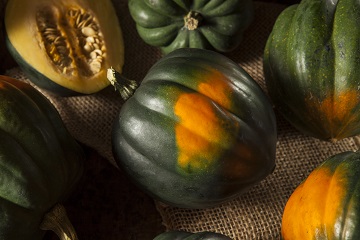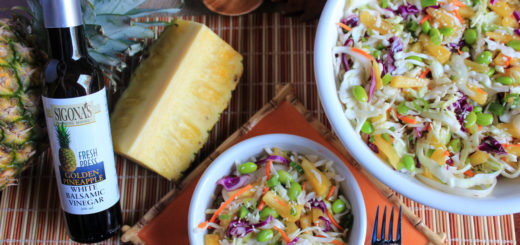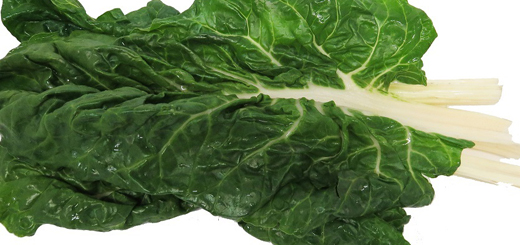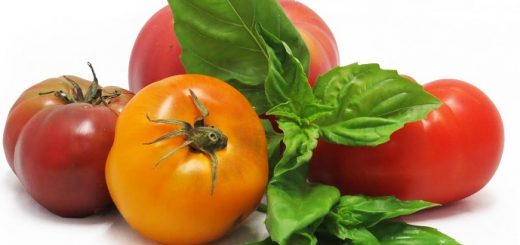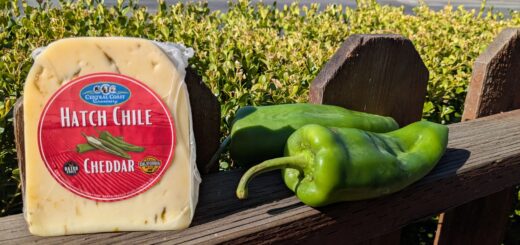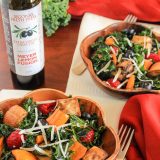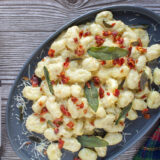In the Store with Sigona’s Featuring: Fall into Acorn Squash
Diane Rezendes, food writer
Even though the days are still sunny and warm, subtle (and not-so-subtle) changes indicate fall’s approach. Sunrise is later and mornings are cooler. Less subtle, perhaps, are the plastic tombstones and skeletons that keep popping up overnight in people’s front yards.
Here in the store, it’s a transition time as well. You can still pick up plenty of summer’s bounty – juicy stone fruit and tomatoes, to name two – even as we’re beginning to get in some of our wonderful winter squashes – butternut, pumpkin, and this week’s featured vegetable, acorn squash.
Acorn squash, named for its shape, works well with any preparation where you’d use its butternut cousin. But unlike the butternut, the acorn squash has an aesthetic advantage. Its shape, when halved and roasted, is perfect for a single serving, and the contrasting colors of yellow-orange flesh against a deep green skin is nothing short of gorgeous.
When you’re thinking about flavor combinations, you can go savory (consider thyme, goat cheese, bacon, onion, or sage either alone or in combination) or sweet (such as maple syrup, butter, nutmeg, cinnamon, and walnuts).
The acorn squash is as rich in sweet, nutty flavor as it is in fiber, vitamins, minerals, and antioxidants. If you’re watching your carbs, you’ll be happy to know that it’s lower in starch than other winter squashes.
Native Americans have grown acorn squash varieties for centuries before Europeans arrived. Along with other squashes, it was one of the ‘three sisters’ crops, planted together with beans and corn, where the three types of plants are mutually beneficial.
Choosing and Using.
Acorn squash weighs 1-3 pounds. Whatever size squash you choose, it should feel heavy for its size; this indicates good water content. Once you get it home it will keep several weeks, though if you are looking for a longer-storing winter squash, you might choose another. The acorn is best cooked within several weeks of harvest.
The traditional way to prepare it is to cut the squash in half and remove the seeds. Put it on a cookie sheet or shallow baking dish. You can cook it as is, or dot it with butter and spices, depending on how you want to use it. Roast it at 400 degrees till a knife goes through easily, around 20-25 minutes. (this isn’t a hard-and-fast rule on oven temperature. For example, if you are baking chicken at 350, you can cook the squash in the same oven; just adjust the cooking time accordingly.) And if you are doing the Paleo or gluten-free thing, how about using it as a bread bowl for soup? (Just be sure to slice a little of the bottom of your half without breaking the ‘bowl’ so your squash won’t wobble.) And baked-stuffed is a favorite festive method; here are some recipes we recommend.
And you can roast the seeds too!
By the way, if you want to know more about all of our squash and pumpkin varieties, as well as our decorative gourds, check out this article from our archives.

